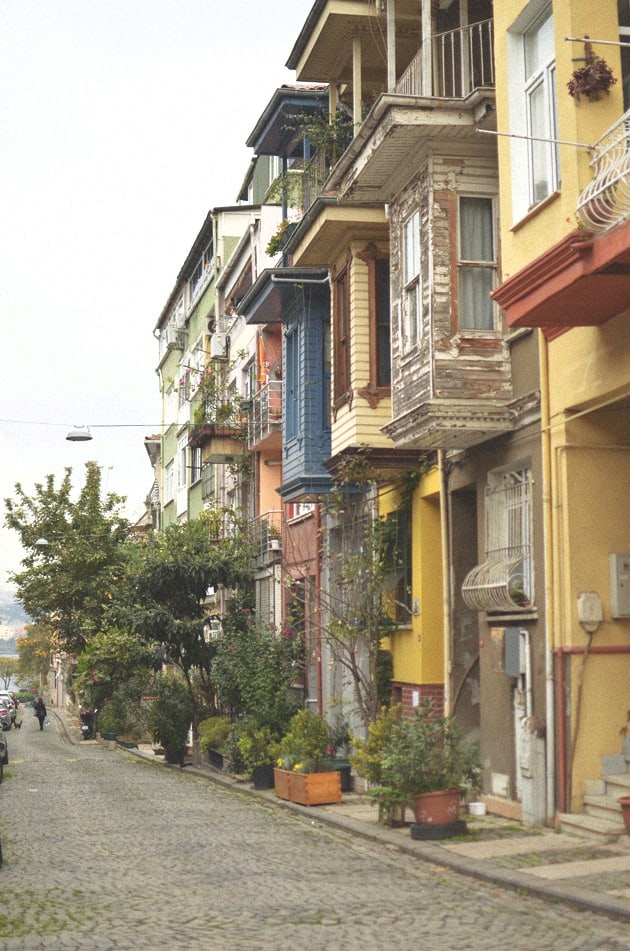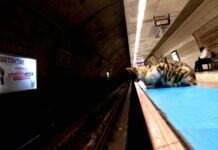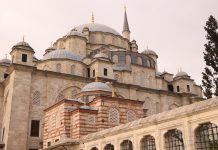
Kuzguncuk is a little slip of a neighborhood whose reputation has a surprisingly wide reach. I had not even left dusty Tarsus in Southern Turkey behind, when one of my former colleagues told me I had to go. “You will love it,” she said. I jotted down the name in a notebook somewhere and soon forgot about it.
Then on my first day at work at Üsküdar American Academy, I heard some colleagues talking about a cute neighborhood nearby and my ears tingled. They had me at “lots of cafés and boutiques.” So within the week, I found myself following Icadiye Caddesi downhill, seemingly moving further back in time with each step closer to the heart of this village-within-the-city.

Kuzguncuk is indeed lovely. Wedged between Paşalimanı and Beylerbeyi on the Bosphorus coast, it is replete with old wooden houses from the 19th century. Diminutive cafes spill onto the sidewalks, soft lights strung over them. Its main drag is flush with trees that canopy the street, and there are winsome shops alongside swank new galleries and interior design offices. Plenty of old-timey markets, tea houses and meyhanes fill out the space.
But Kuzguncuk is more than its movie-set facade. Heralded as a historic site of tolerance and coexistence, it is a place where synagogues still stand alongside Greek Orthodox and Armenian churches and the newer mosques among them. Traditionally a place where mostly minorities lived, many Jews came here following their expulsion from Spain in the 15th century. There was an influx of Armenians in the 19th century as well.
And there, in terms of the mien of the place, it would seem history stopped. Kuzguncuk, whose name now translates to “Little Raven,” has a quirky storybook quality, bringing to mind Chagall’s paintings of askew villages. As writer and longtime resident Tan Morgül described it, “Kuzguncuk doesn’t seem to be on the same linear line of time as the rest of the city.”

Given these qualities, it is hard to believe that Kuzguncuk was rocked by anti-Greek riots, as was much of Istanbul, in the 1950s. According to oral histories collected in the area, however, casualties were low here. Many locals tried to help victims of rioters who came in from other neighborhoods. Nevertheless, an emigration process already underway accelerated after these events. Slowly the demographics changed: Greeks, Armenians, and Jews left, and Muslims mostly from the Black Sea region populated the neighborhood.
Today other ripples of change are gently washing over the place. Long-time residents have witnessed architects and artists move in and a gentrification process get underway. Just ten years ago, there was scarcely a cafe or boutique along the main street that is now dotted with colorful storefronts and open doors. But it is a slow process, making it easier to adjust to. Morgül attributes this leisurely pace of change to Kuzguncuk being a “neighborhood of laziness.”

Perhaps it is simply a spell that comes over anyone who moves in: it’s a natural response to want to slow down, and this corner of Istanbul seems to attract people who want to share in and preserve its nostalgic quality. New arrivals immediately feel the allure of becoming a regular, and choose their cafes accordingly. One option is the Pita Cafe, where Morgül and I chatted; our conversation was continually punctuated with greetings as familiar faces came and went. Or Cafe Sitare, across the street and down a couple blocks, with its spacious bohemian quarters and garden in back. Or the Kafe Lâ Mekan that feels a bit like being in your neighbor’s cozy kitchen. Or the Çınaraltı Cafe, much frequented by the poet Can Yücel in days gone by.
A civic pride is cultivated here, one example being the now protected green area just off of Icadiye, which residents started as a “guerilla garden” inspired by the Gezi Park protests. If you stand in this garden facing the old Ottoman houses that front it, and if you can just keep one newer apartment building out of your vision, you will find yourself transported to another time.
Today there are swish boutiques, restaurants, cafes, and galleries, but Kuzguncuk retains a traditional and unspoiled character. You don’t need to eat anything or buy anything: just strolling around here, where old houses are being restored one by one, is restorative to the spirit.
Zamira Skalkottas is a contributor to Yabangee.
Photo credit: Diane Zhang
[geo_mashup_map]



































This was a lovely read about a lovely place. Thank you.
I got married in Kuzguncuk at a really nice garden called Yanik Mektep. Highly advised!
Congrats on your wedding. I can imagine how lovely it was in a garden of Kuzguncuk.
I’m glad you enjoyed it.
[…] Stop thinking you’ve seen the city when you’ve never even heard of Kuzguncuk. […]